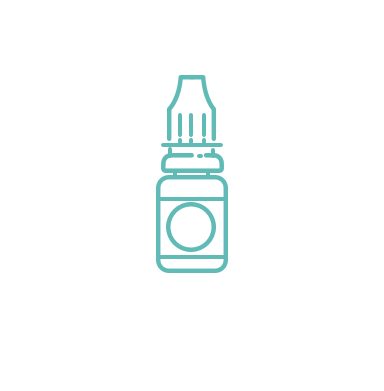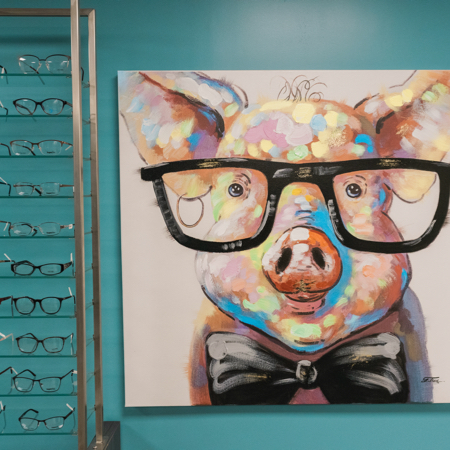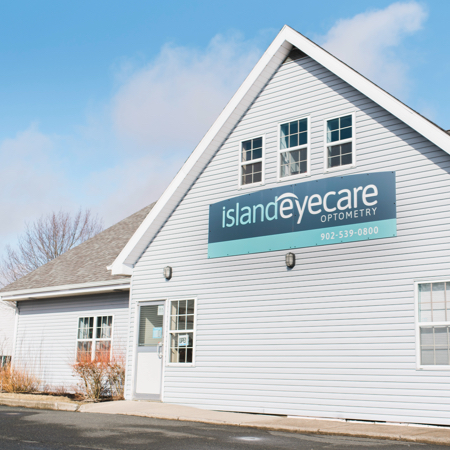If the world beyond your arm’s reach gets progressively blurrier, you might be in the myopic club. Myopia, also known as near-sightedness, is quite a common diagnosis in our practice, even around the world — and when people think of myopia, they’re probably more familiar with low and moderate myopia.
In case of low to moderate myopia, get a pair of glasses, prescription sunglasses, or contact lenses, and you’ll see just fine. But at more extreme prescriptions, myopia can become a little more threatening to your sight itself.
Myopia
Myopia is certainly not rare. More than 25% of Canadians are nearsighted. In other countries, that rate can hover between 11% and 36% of its population. By 2050, it’s possible that myopia will affect up to 50% of the world’s population. These patients can develop low to moderate myopia due to genetic and environmental (indoor living and working with close-up focusing habits) factors.
Low Myopia
Low myopia is the most common. While there’s no cure, simple correction of your vision with eyewear has been the routine for myopia since eyeglasses were invented. Low myopia can be corrected by glasses, prescription sunglasses, contact lenses, some laser eye surgeries, and orthokeratology (Ortho-K),
High Myopia
In the world population, only 1.7% to 2.1% have pathological myopia, leading to myopic macular degeneration. These patients experience more problems than just poor visual acuity. They can endure complications that rob them of their sight if untreated.
There are different types of myopia: low myopia, moderate myopia, and high myopia. High myopia often comes with a prescription of -5.00 diopters or worse, according to some sources, or worse than -6.00 diopters, according to others. Sometimes, prescription power isn’t the only thing an eye doctor looks at in determining whether a patient’s myopia is pathological. They also look at axial length.
Axial Length
Axial length is the length from the front to the back of the eye. It’s a measurement that eye doctors use to assess myopia. Axial length is significant because it’s a reliable indicator of which treatments might work.
If an axial length is not quite right, there could be several issues. Nearsightedness (also known as myopia) is where the axial length is too long, meaning the focal point for images falls short of the retina.
Typically, axial length measures between 23mm and 24mm. Researchers found that riskier forms of myopia often come with an abnormal increase in axial length. Each age group’s average axial length is 22.36mm at 6 years, 23.10mm at 9 years, 23.41mm at 15 years, and 23.67mm at adulthood. If a person exceeds these values at these ages, a myopia diagnosis is likely.
An optometrist is well trained at gauging your axial length and understanding the reasons surrounding its abnormal length. Although axial length isn’t the definitive indicator of pathological myopia, an optometrist will be on high alert if a patient’s axial length exceeds 26mm for an adult.
More elongated eyeballs don’t capture images efficiently, which can lead to spiraling problems at the back of the eye.
High Myopia Complications
There is a chance high myopia can lead to blindness. Myopia complications that can lead to blindness include:
- Myopic Maculopathy
- Retinal Detachment
- Cataracts
- Glaucoma
- Choroidal Neovascularization (CNV)
Surgical intervention might help to some extent for some of these complications. But no two patients are the same, and each complication could lead to something worse. So it really depends on how quickly and totally high myopia can upset your ocular health.
The Link Between Myopia & Glaucoma-Caused Blindness
Studies show that the higher degree of myopia you have, the higher your risk for glaucoma. In particular, it increases the risk of primary open angle glaucoma.
You’re up to twice as likely to get glaucoma if you have myopia. As myopia worsens, retinal nerve fibre layers and macular thickness change, increasing your risk of glaucoma.
Severe myopia may also cause segmentation errors during macular imaging, making it difficult to accurately diagnose glaucoma in patients with high myopia.
CNV & High Myopia
Age-related macular degeneration and high myopia both have the development of CNV in common, but the effects and treatments are different.
Before CNV due to myopic maculopathy can result, a few symptoms appear and aggravate the process. A tessellated fundus and lacquer cracks both help CNV develop and progress myopic maculopathy.
How Can Myopic CNV Lead to Blindness?
CNV is one of the more significant “falling dominoes” that link high myopia to blindness. It’s all in the way new, invasive blood vessels offshoot, disrupting the smooth surface of your eye’s macula, leading to atrophy in these sophisticated, detail-oriented cells.
It’s this atrophy of the macula that completes the process of myopic maculopathy, resulting in some level of vision loss. Before it progresses to total blindness you may experience legal blindness even with a valid prescription coming from a comprehensive eye exam.
How to Help Prevent Blindness Linked to Myopia
Myopia, particularly high myopia, not only impacts your vision in the short term, but it can eventually lead to blindness. Studies across the world have shown that myopia can increase your risk of blindness through disorders like macular degeneration, retinal detachment, glaucoma, and cataracts.
However, this doesn’t mean that if you have myopia you will eventually go blind. With the right monitoring and intervention from your optometrist, you can help protect your vision.
Your optometrist can recommend a number of myopia control methods which will help reduce the risk of high myopia, and ultimately, myopia-related blindness.
Myopia Control
Myopia control encompasses a number of treatments that help slow the progression of myopia. These treatments can include:
- Multifocal contact lenses
- MiSight contact lenses
- Special glasses lenses like MiyoSmart and MyoVision Pro
There is no cure for myopia, but with the help of your optometrist, you can help reduce the impact myopia has on your life.
















